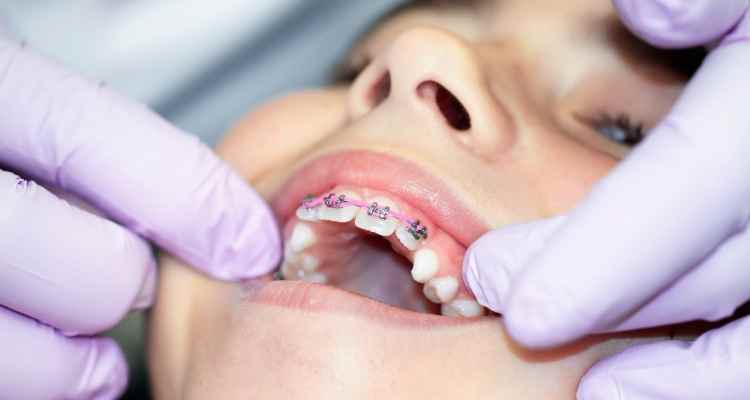Whether it is for cosmetic purposes or to improve oral care, millions of people in the US opt to straighten their teeth every year. However, the cost of orthodontic care and getting braces is quite prohibitive.
According to the ADA (American Dental Association), the average cost of braces in 2018 was around $4,000 and $7,000 and the average cost of braces without insurance can range between $6,000 to $7,000. Thankfully, there are ways to find affordable ways to get braces, which can help to reduce your financial burden, such as paying for braces monthly.
Types of Braces
- Metal Braces: Made of stainless steel, metal braces are the most common and most affordable types of braces. Typically, metal braces cost around $3,000 to $7,000.
- Ceramic Braces: These are colored and are not visible because they blend in with your natural teeth. The cost of these braces ranges between $4,000 and $8,000.
- Lingual Braces: Usually custom made, these braces are installed behind the teeth and so they are not visible. They are quite expensive, costing between $8,000 to $10,000.
- Invisalign Braces: Invisalign braces are removable transparent inserts that are usually used by people requiring minor teeth alignment. The cost of the Invisalign braces depends on how many molds are required to straighten your teeth and can range between $4,000 to $7,000.
How to Reduce the Cost of Braces
There are many factors that affect the cost of orthodontic treatment to straighten teeth. The main factor is the degree of correction required. In general, the average period of treatment is around 2 years but it can vary between 1 and 3 years. So, how can you get the best prices for braces?
Try to Choose Low-Cost Braces
Compared to lingual braces and Invisalign braces, metal braces or the traditional option is the least expensive, not to mention that these are the most effective in correcting orthodontic issues quickly. By opting for the cheaper options, you can reduce the cost you would be spending every month on braces.
Dental Insurance
Check your dental insurance policy because not all of them cover orthodontic treatment like braces. Most of the policies cover individuals under 18 years and usually contain an annual or lifetime maximum payment that covers only part of the cost.
So, if you’re planning to purchase dental insurance, check the coverage offered for orthodontic treatments. Some plans cover 50% of the cost, which can be a huge benefit.
Ask for a Payment Plan
If you don’t have dental insurance, you could check with your orthodontist if they offer interest-free plans to cover the cost of braces. Several orthodontic clinics offer flexible payment plans that are sure to cost much less than traditional credit financing. You can opt for plans that allow you to pay in interest-free installments over many months for up to 2 years.
Ask for a Discount
If you make an upfront payment for the orthodontic service, your orthodontist may give you a discount. Or, if there are many members in your family availing of the services of the orthodontist, you may get a discount. Whatever may be the case, don’t hesitate to ask for a discount because this can help to reduce the cost of your braces.
Go to a Dental School
Go to a dental school for your braces instead of an orthodontic clinic. You may be able to get discounted services for services offered by apprentices or students who are completing their orthodontic training.
FSA or HSA
You can use your FSA (flexible spending account) or HSA (health savings account) provided by your employer for your orthodontics treatment. You can use these tax-free funds to pay for expenses that are not covered by insurance such as the cost of braces.
Financing Options
You can look at credit finance options like credit cards, personal loans, etc. to finance the cost of your braces. While these options may cost more than other types of payment methods, you have the option of spreading your repayments.
Dental Assistance Programs
For the benefit of low-income families, several states offer dental assistance programs. You can also consider other options such as free clinics run by dental volunteers, financial aid or not-for-profit organizations to help you cover the cost of braces.
Now that you have some information regarding cheap payment options for braces, you can explore the various options before deciding which method to opt for. It’s a good idea to consider the pros and cons of each of the options, before selecting the best option for you.

